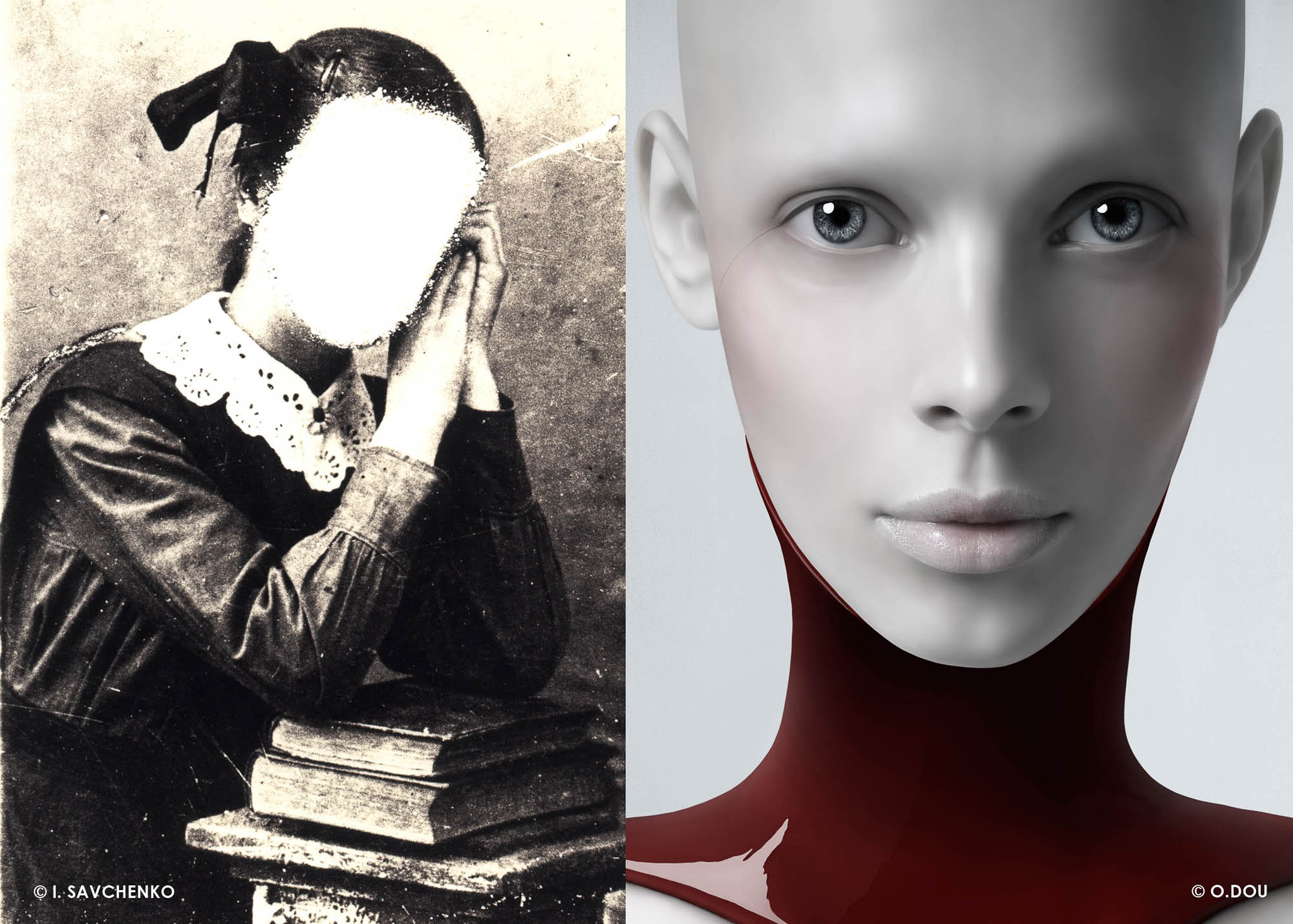


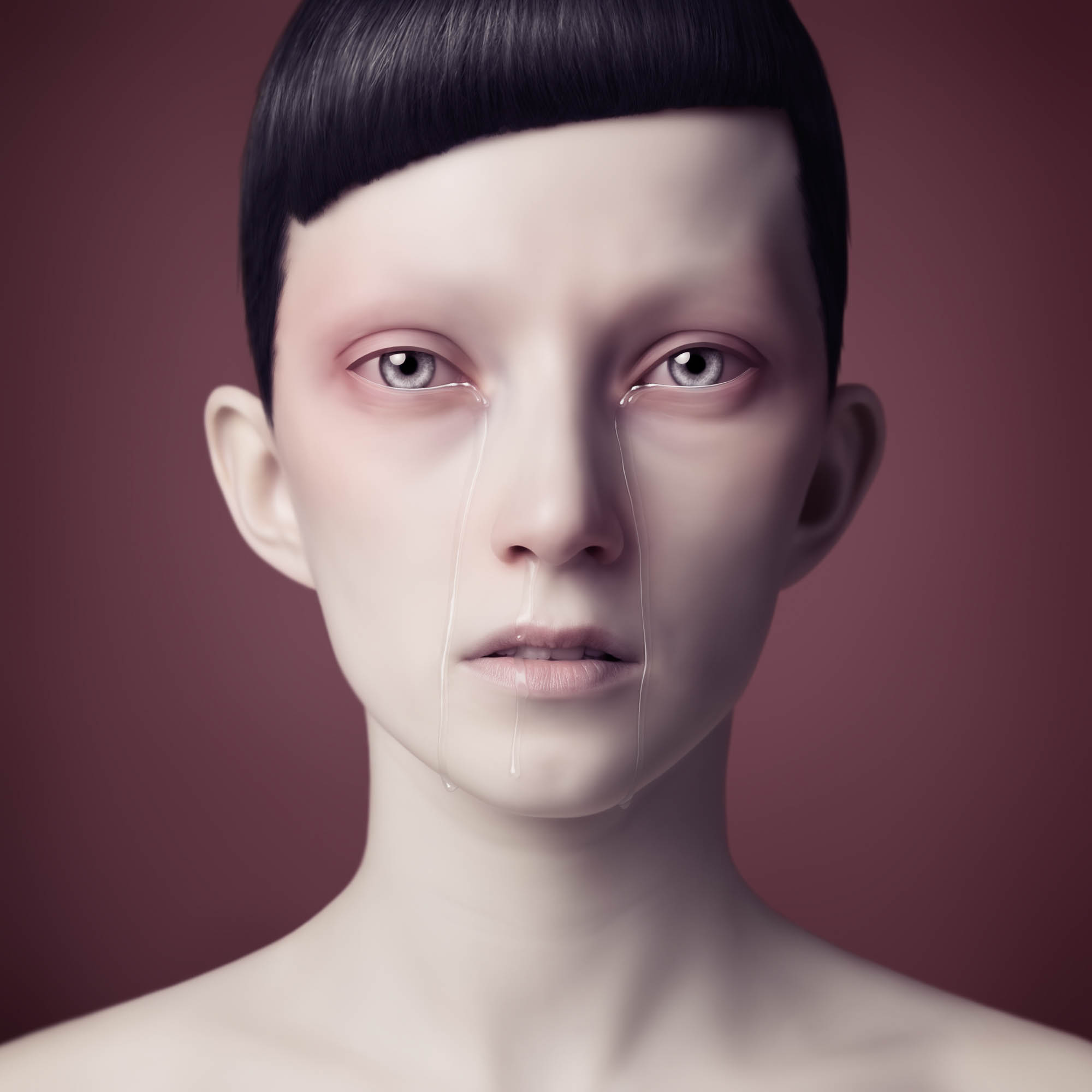
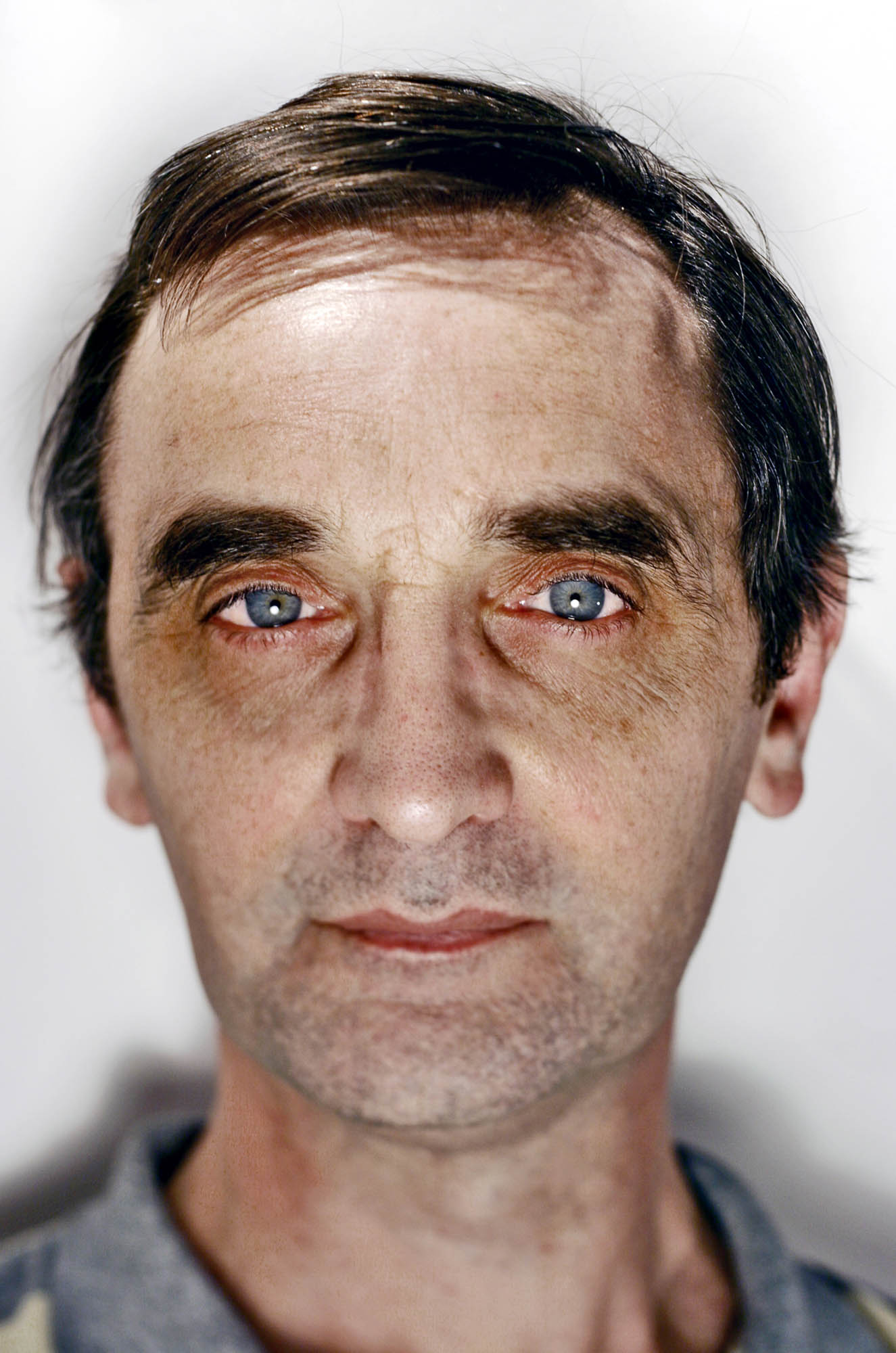


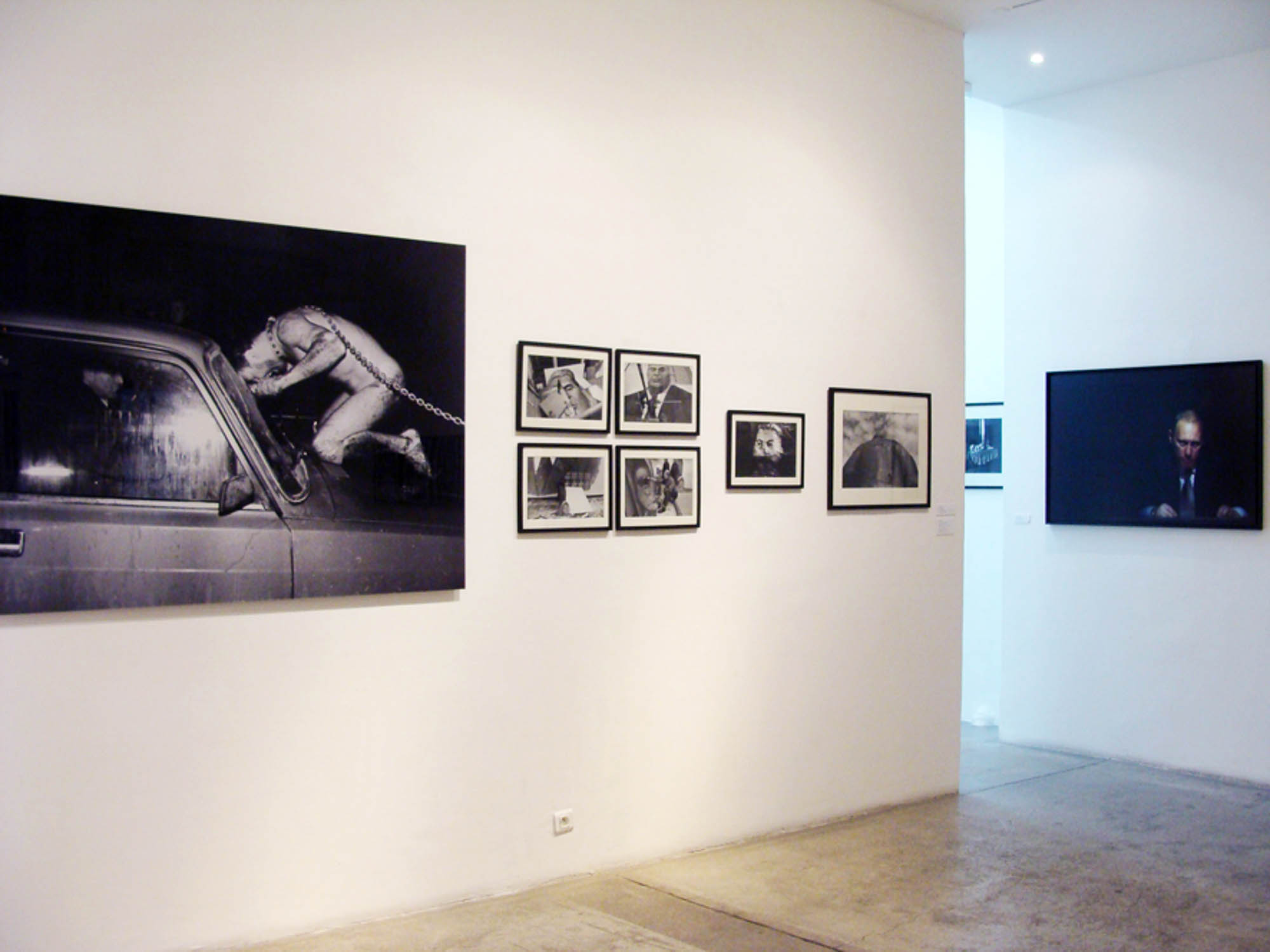
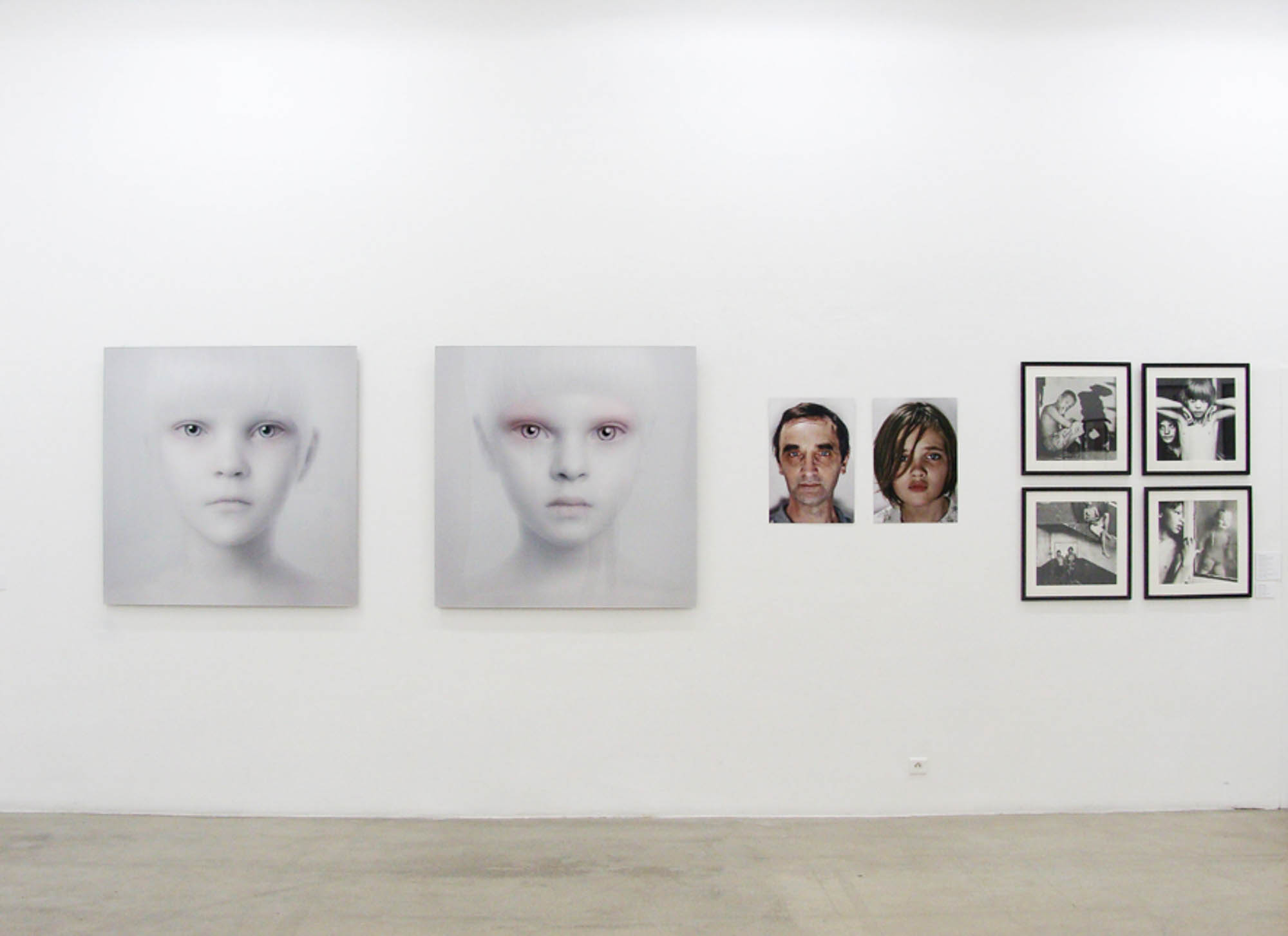

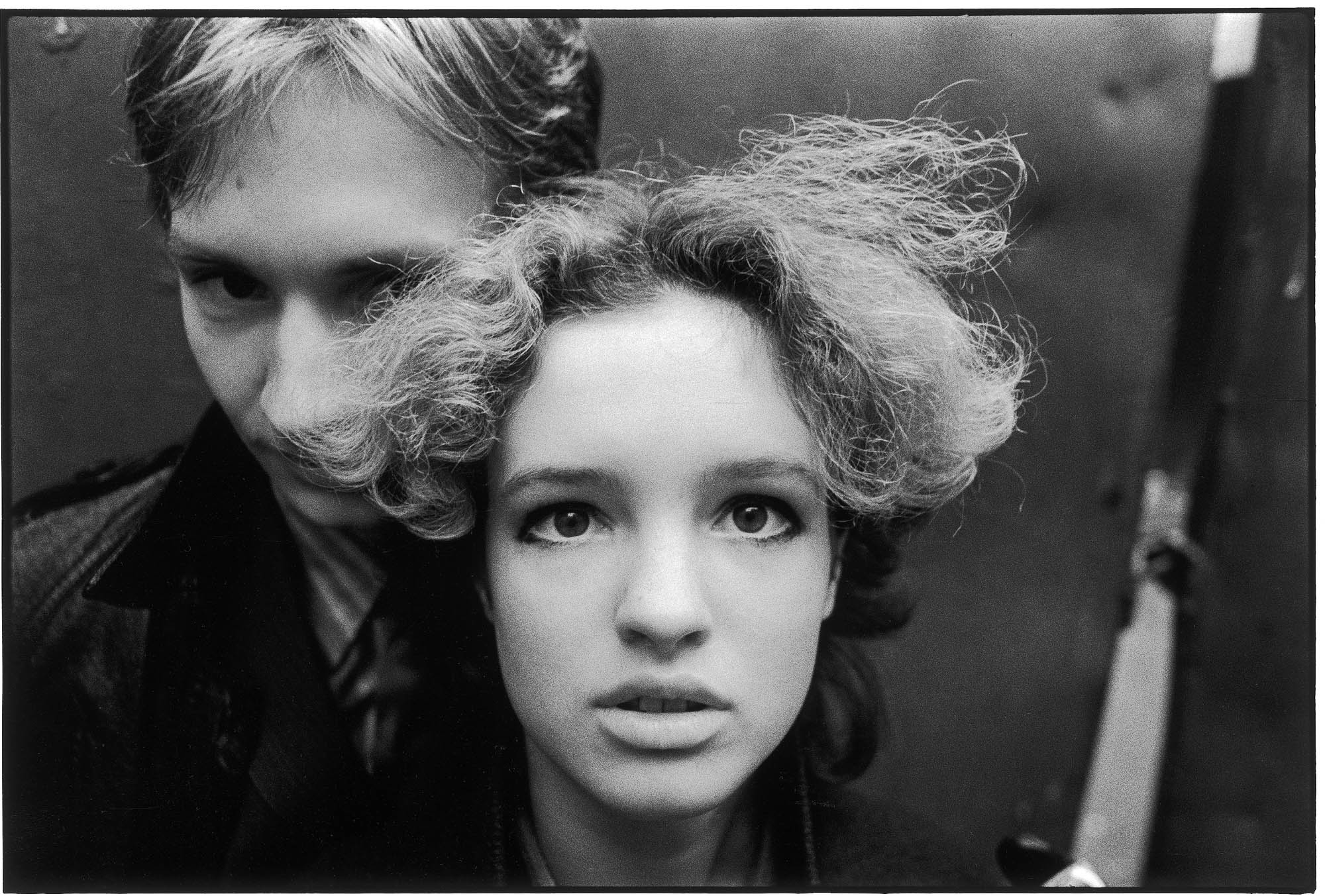



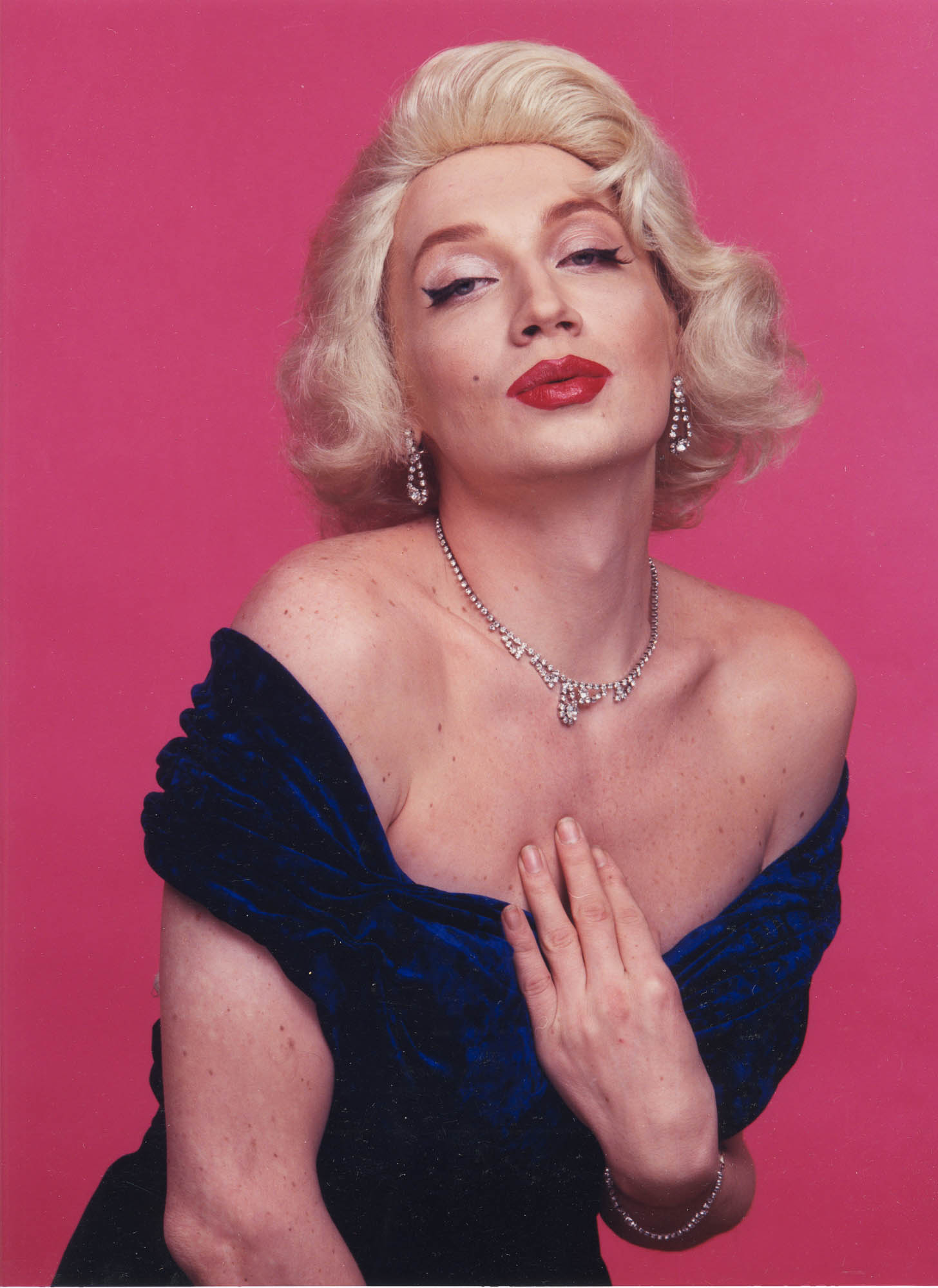
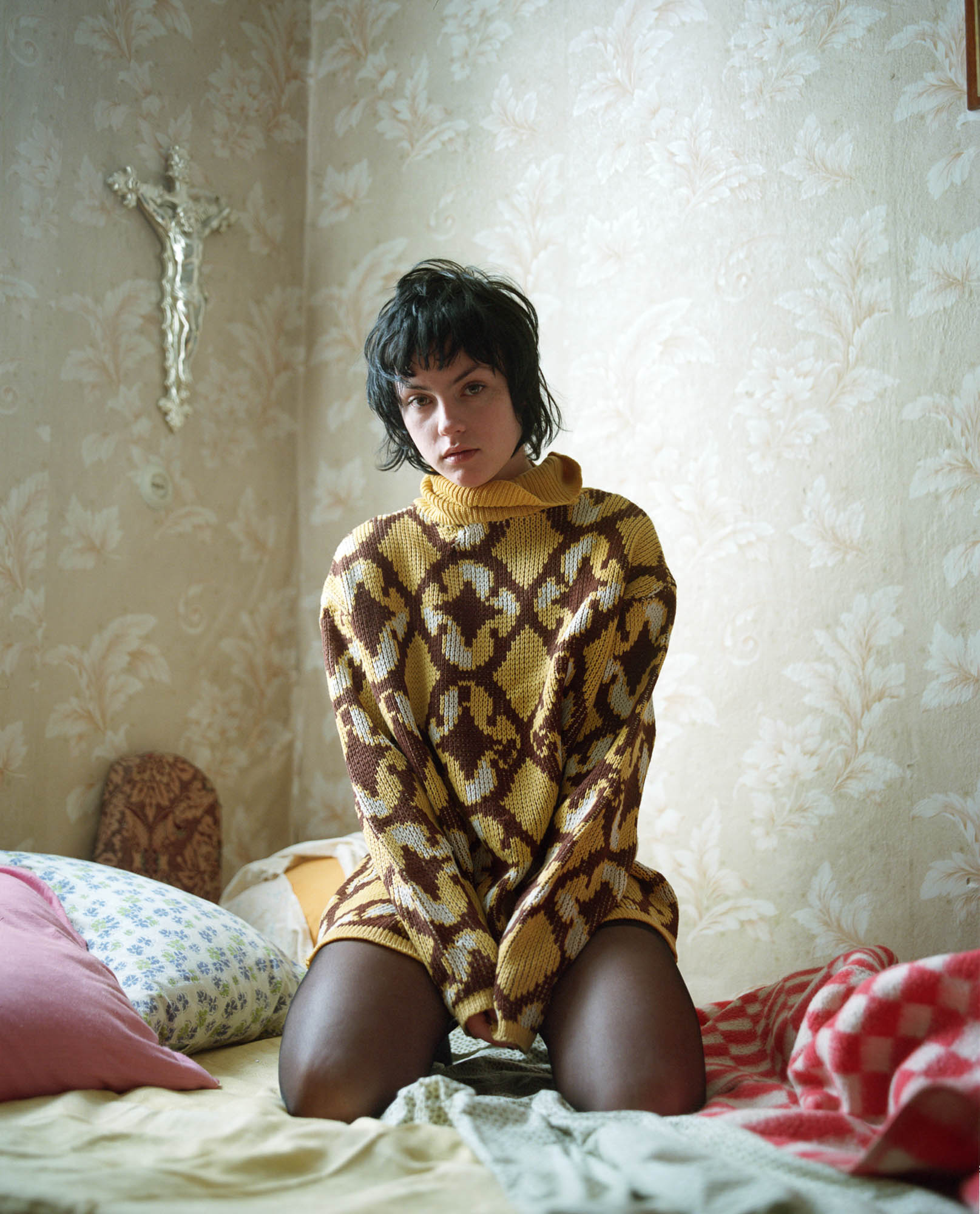

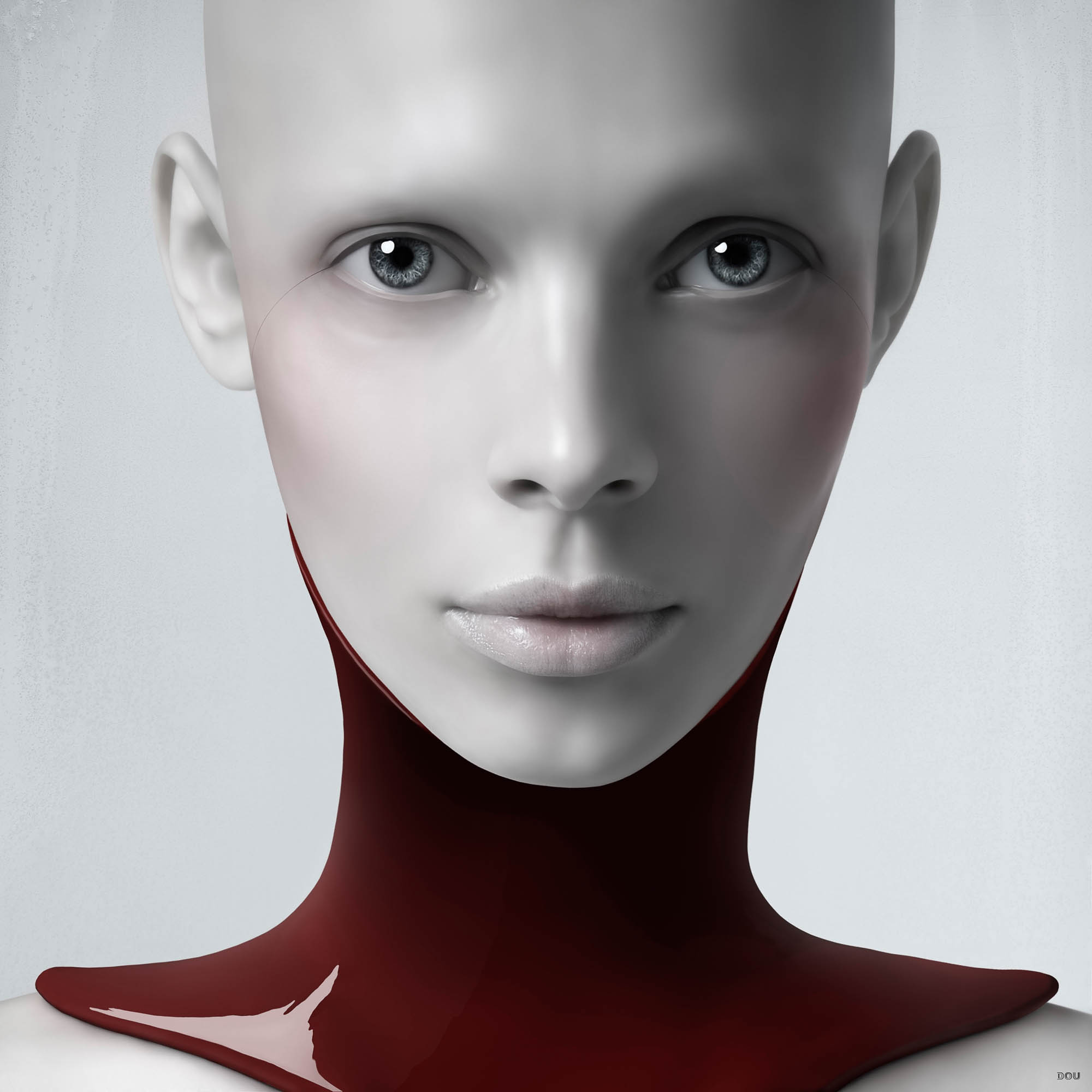

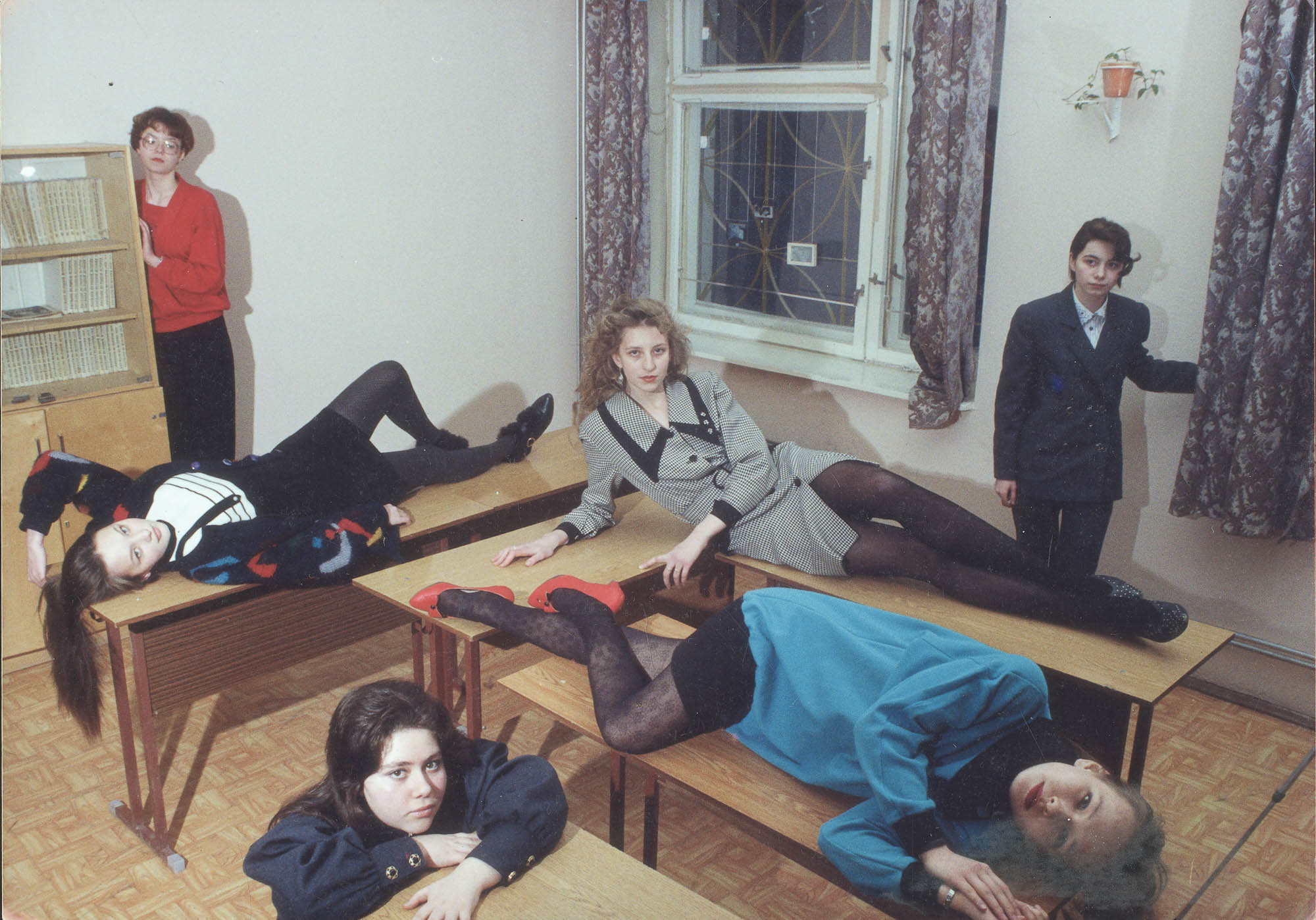
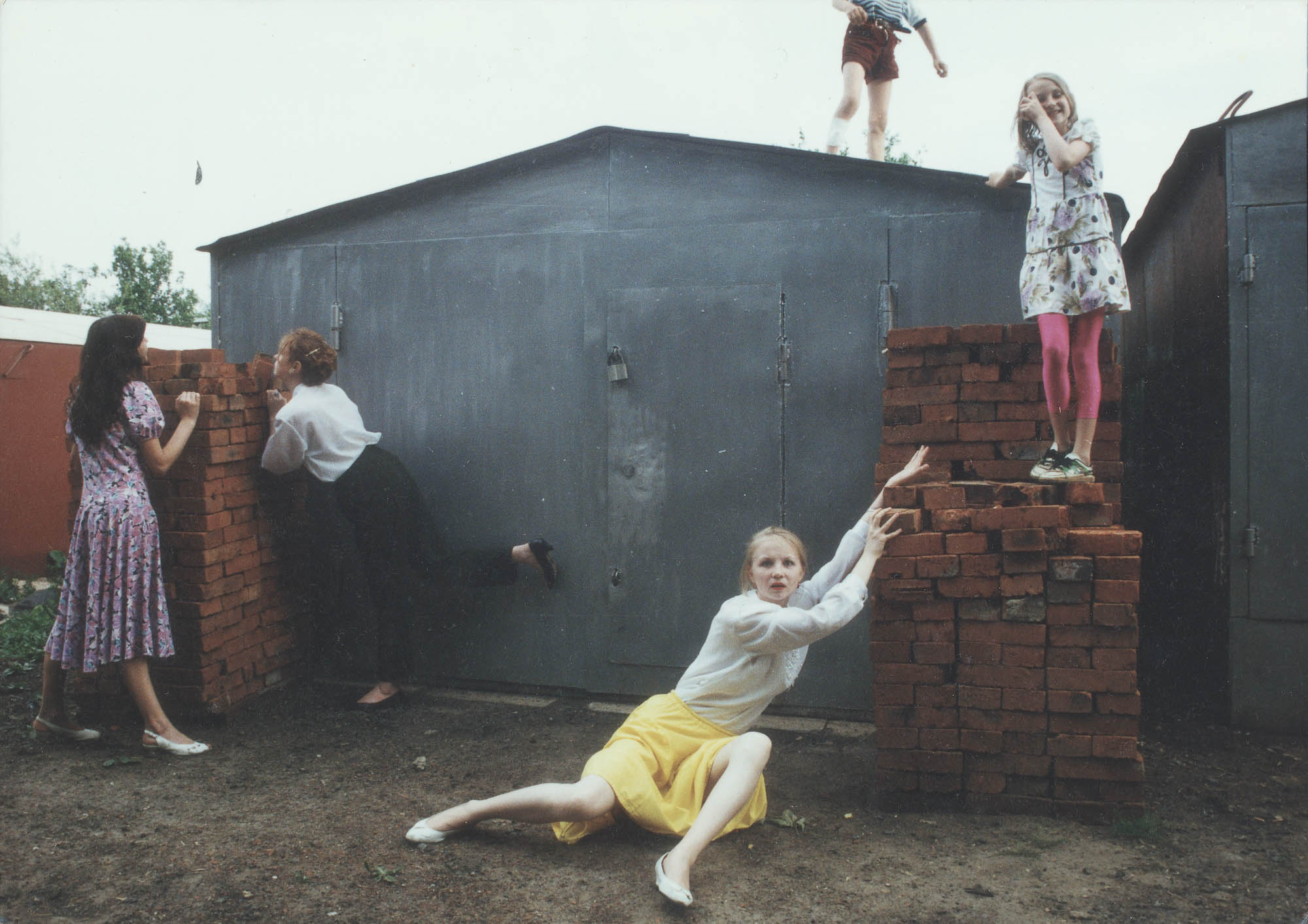
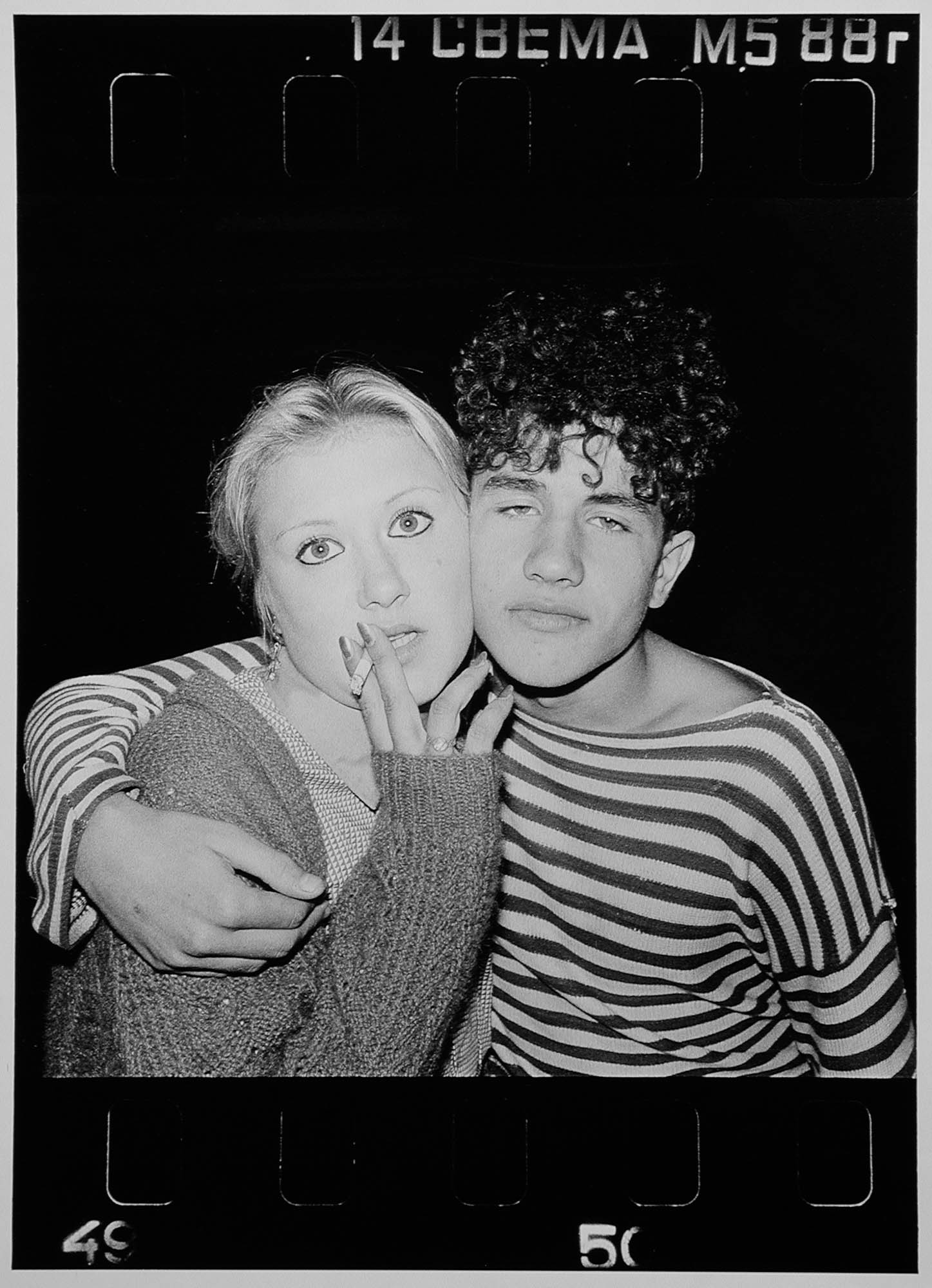
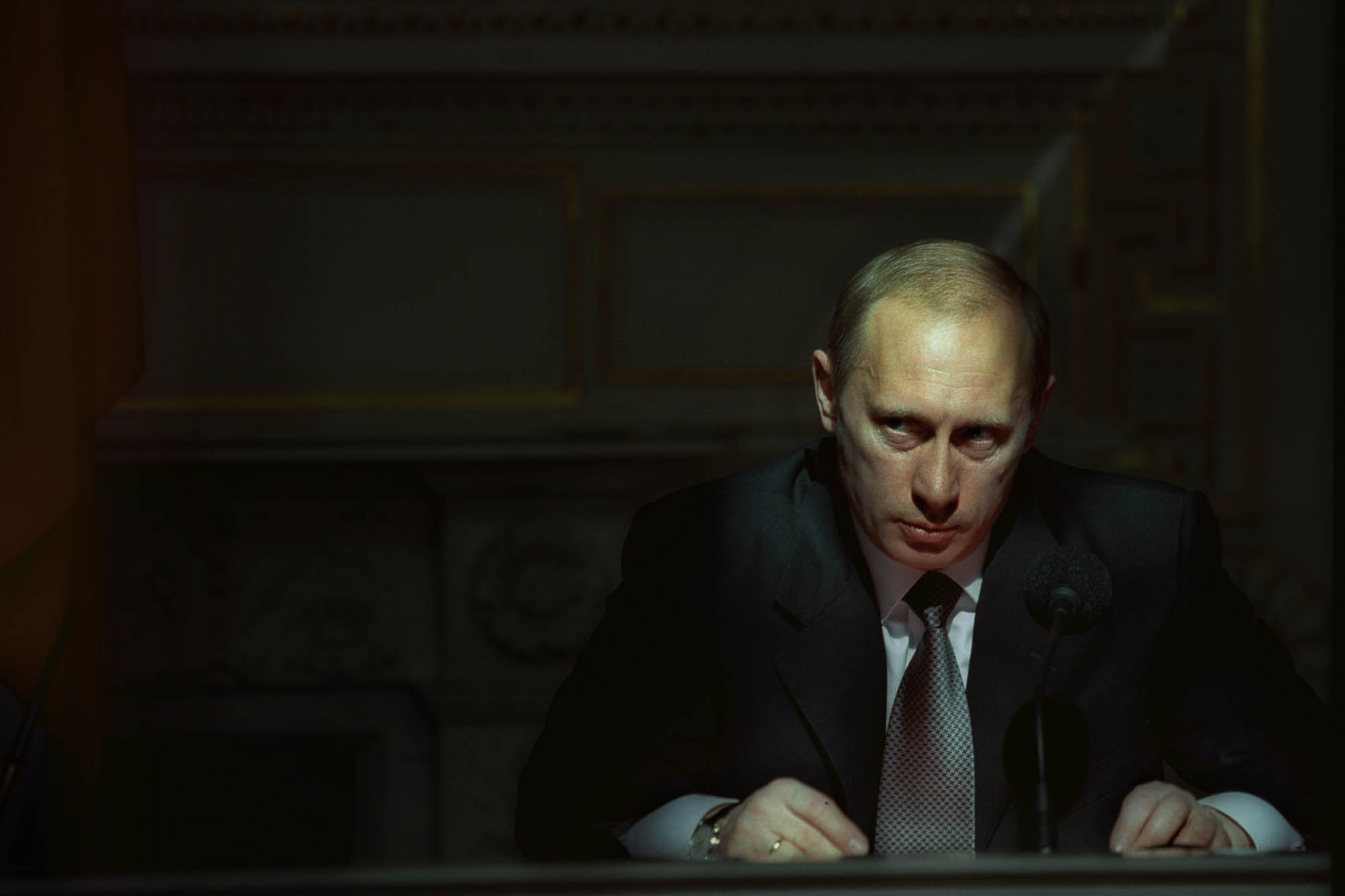


With Nikolay Bakharev, Oleg Dou, Alla Esipovich, Olga Kisseleva, Oleg Kulik, Lialya Kuznetszova, Sergey Leontiev, Tanya Leshkina, Vlad Mamyshev-Monroe, Sergey Maximishin, Evgeny Mokhorev, Igor Mukhin, Valery Nistratov & Jason Eskenazi, Margo Ovcharenko, Irina Popova, Arsen Savadov, Igor Savchenko, Valery Schekoldin, Sergei Tchilikov, Dasha Yastrebova.
Curated by Liza Fetissova, Russiantearoom.
Portraiture is maybe the art in which the photographer opens up the most, till his intimacy. He tells us a story in the most condensed way as possible, and this story can be the one of a country as the one of a child. A photographic portrait is often a pose, a posture, an ideal image. From the photographer, from the mode, and from the depicted period.
The exhibition we are proposing to set up draw, for these reasons, an exemplary ambition: It’s at the same time artistic, anthropological and politic. Through some Russians portraits, the pictures try to answer to two questions: “what’s a Russian?” and “How looks the Russian photography?”
To explain a Russian and his country, we inevitably dive into soviet period. All photographers whose work is presented in this exhibition were born in Soviet Union. None of them were spared by the virus of the system, but for the young generation who are native from an ex-republic like Ukraine or Georgia…
The last fifteen years in « Russia » (soviet and post soviet) give us an occasion to follow the spectacular evolution of the phenomenon of oneself and other’s representation.
« Krasnyi Treugolnik » (Red Triangle) was a bid rubber factory, with its heros and heroines, its life rate, its habits, its rites, and its developped social infrastructure. The studio portraits of its workers are worthy of d’Harcourt, the children of the nursery school frozen but however happy, still incapable of hiding their individuality, men at work. The ceremony of the staging remind us so many others imposed in others times in others countries. A classic of its kind.
Byleorussian artist Igor Savchenko uses vernacular photography. Through the excuse to show us the mystery of a picture, the full of a time tritely expose in some agreed poses, some characters without drama, want to be the director of a story we know tragic.
In the continuation of the « Krasny Trugolnik » album, Olga Kisseleva establishes a historic parallel in her video installation, in three times. Since the 60s, curiously, it’s the “amatory” pictures that look like today the most professional and captivating, and we show into the exhibition. At this time, each photograph has their own wheeze.
Sergei Tchilikov does the direction of the citizen form N., like easily putting them down, as some figurines, in some recognizable landscapes - a community apartment or a forgotten seaside place.
The public « heroes » parodies of Vlad Mamyshev-Monroe are acerbic and self-criticism. The pictures are a part of the artist’s character, who lives always disguised, in Lenine, in Pope or Marylin in some contentious contexts.
The Poutine of Sergey Maximishin, in spite of the fact it looks very real, appears as the evil personified. Russian photo reporter the most reputable of Russia, Maximishin draw up a report of the “last empire”. His subtle and ironic portraits are a poignant accuracy, trough those ones he try to surround «the country without roof or floor”.
The pictures of the initial provocative performance of 1991 of Oleg Kulik are the persuasive evidences of the animal despair’s strength and the revolt against the human trouble.
In a more classic vein, but strong less, we find the pictures of Valeri Schekoldin and Lyalia Kuznetsova (for the “ancients »), Nicolai Bakharev, Igor Mukhin and Evgeny Mokhorev (younger), and Irina Popova and Margo Ovcharenko (for the news). Fondness, love, nostalgia, strength and beauty of their pictures make any explanation pointless.
Valeri Schekoldin, poet of streets and damaged persons paint a picture of a country in distress and neglected population.
Lyalia Kuznetsova takes in picture, for 40 years, the Tziganes; these poetic pictures are finally gathered together in a book « Doroga » (« The Road »).
Evgeny Mokhorev work on the topic about the passage from the childhood to the adult age, passing through the complex stage of adolescence.
Nicolai Bakharev dives us in the intimacy of lovers and provincial ordinary families.
To « going-up value » to classic rank, Igor Moukhin continues to treat the same subject: the life around him. But the positivism of the begins of the « Perestroïka », all this happy post soviet youth full of hope and energy, went away from his pictures. Only the depressed city full of tired people we can see today on pictures. After the waking up, the hangover…
Irina Popova tells us some stories, like the one about a young drug-addict couple and their little girl Anfisa.
Margo Ovcharenko, at 20 years old, follows the marginal conditions of the young people of her generation.
The characters of Oleg Dou, weaved of human flesh, smooth as a publiciting picture, without any kind of feelings and robotized, leaving a little hope in theirs “talking” eyes. Disturbing present or very close future?
To finish and as a mondial world first, « Title Nation » project, of Jason Eskenazi and Valeri Nistratov, two reputable photographs travelling all over the country for two years to constitute a exhaustive panorama of Russians archetypes, will be projected.
Whatever the generation, the Russian artists bring together here have the heavy privilege to participate to a major question: how to define the Russian photography? On the one hand, suddenly exposed to the occidental tendencies and modes, influenced but the best occidental examples, On the other hand deeply touched by the post soviet period and a millennium of “Russian spirit”, how they will definite their specificity? This exhibition is a first element of answer, which anyway convince this is original, surprising, disturbing – like was at those time the Russian literature.
